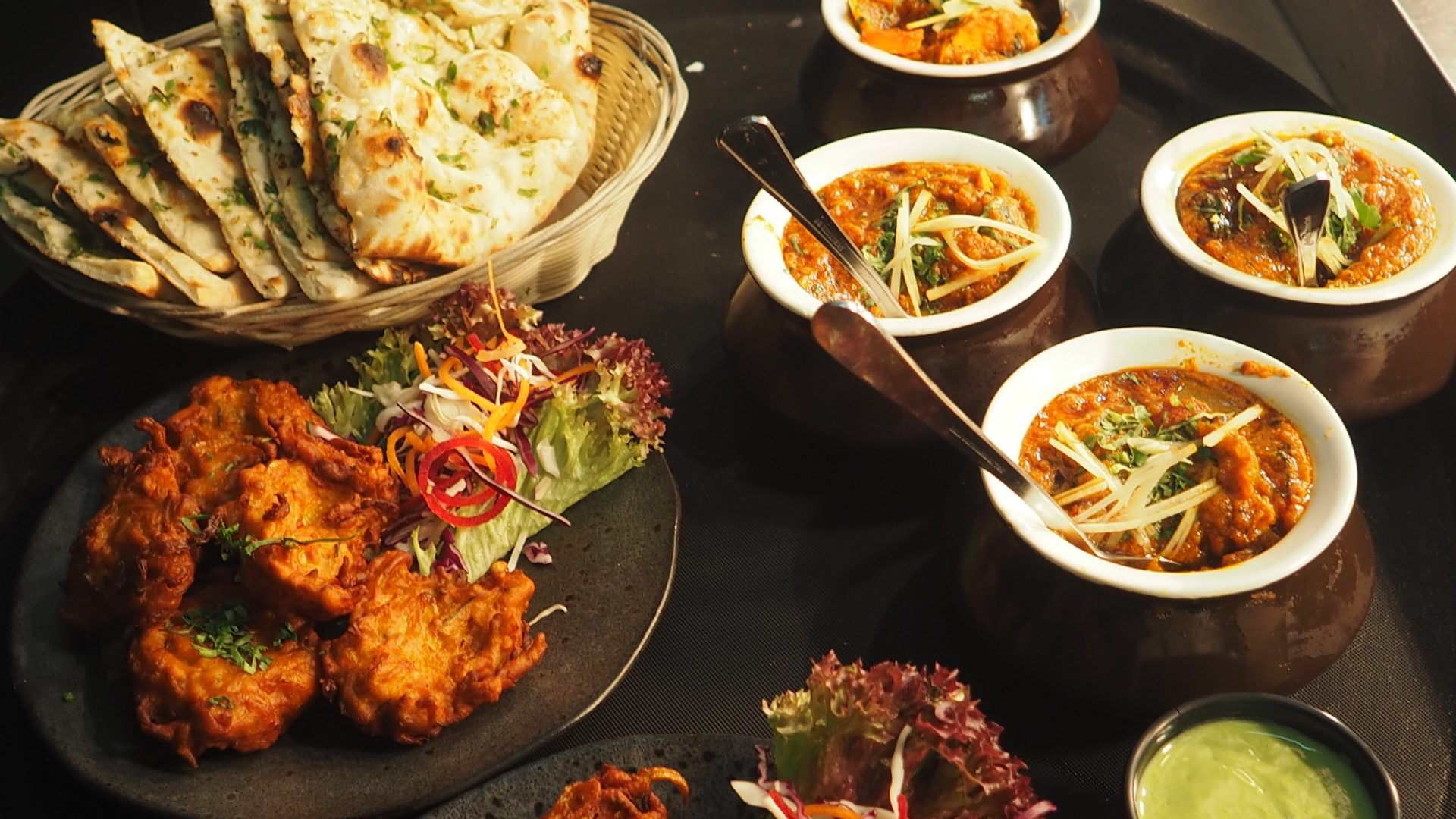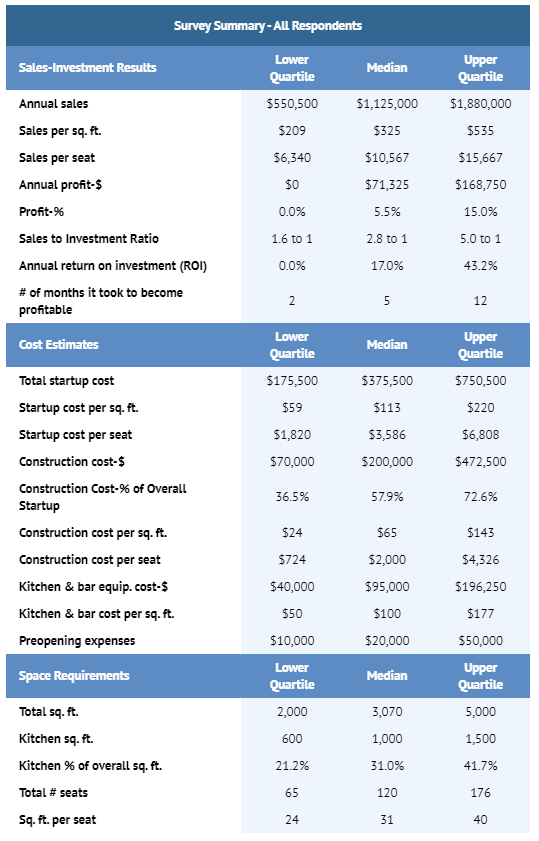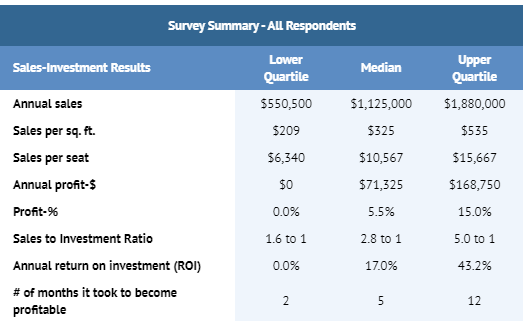The Cost And Profit Of A Restaurant

Owning a restaurant is a dream for many people. Whether it’s a franchise or privately owned, certain people are made for the food industry. However, is creating a restaurant all it hyped up to be? Furthermore, what is the cost and profit of running your own establishment? These are some critical questions that every business owner must ask themselves before opening a restaurant. Therefore, we will try and take a look at these questions. Our goal is to find, on average, how much a restaurant can earn and cost.
However, in this article, we’ll take a look at privately owned, casual dining restaurants. This is due to the fact that the restaurant industry is extremely volatile. Furthermore, many franchises have different requirements in order to become an owner. In addition, profits and costs can vary greatly. Before we get into the costs and profits, we’ll take a look at the general requirements for owning a restaurant. Without further ado, let’s dive in.
What You Need To Own A Restaurant
Before opening a restaurant, you will have to do a few preparations. However, you need to be diligent because these preparations can either make or break your restaurant. The umbrella term we will be using is a plan. That’s right, you will need to develop a plan on how you’re going to operate your business. If you thought that you could just take a large amount of cash, open up a restaurant, and be successful, you’d be wrong.
Like any business, you need to evaluate the potential risks, profits, and how you’re going to go about your daily business. Before we list off what you will need, it is important to note that there is no set order in how to start your business.
First, you need to decide what kind of restaurant you want to run. Fine dining, casual, lounge, etc. Next, you need to determine who your target demographic is. Defining your target demographic is a major step and should not be overlooked. There are two reasons (of many) as to why it is so important.
First, you can create advertisements and marketing material catered to attract that specific demographic. Second, when looking for a physical spot, you can look up the demographics in certain areas and place your business in an optimal spot. Find out how you’re going to market and your budget. Restaurants cost a lot. Therefore, being budget efficient is in your best interest.
Before you spend any money and are in the planning phase, you need to decide on how your menu will look. Placements, structure, and recipes. Essentially, before you spend a dime, you should know what your restaurant will look like as if it were the back of your hand. Therefore, all marketing, menus, day to day operations, hiring methods, and restaurant blueprints should be finalized (or close to it) before anything else.
Next, you will need a name for the restaurant. Something that is catchy and welcoming. Once you’ve decided on a name, you’ll need to incorporate and register your restaurant as a legitimate business.
After you’ve registered your business, its time to go scouting for real estate. Location is EXTREMELY important to the success of a restaurant. If your restaurant is near your target demographic, is easy to find, and easily accessible, you will have a higher chance of becoming successful. If you need an example, go to any mall. Chances are, there will be stores that are away from the main flow of traffic. I’m willing to bet that they won’t be as busy as their competitor who is in a more accessible spot.
Once you’re in the groove of looking for a place for your restaurant, you will need to apply for the appropriate licenses. This means liquor, music, permits for certain signs, worker’s compensation, and various insurances. The costs for these can vary depending on where you are.
Next, buying out or leasing your building space. For the sake of this section, we’ll say that you’re purchasing the space. Now, it’s time to build the restaurant. The end result of the restaurant should look exactly like the blueprint you created.
While your building is under construction, you should hire your staff as well. Therefore, you can do training and establish a certain environment/culture before the opening. Doing this will ensure that all of your employees are adequately trained and ready for the opening of your restaurant. During this time is when you’re doing most of your advertising. A successful opening will mean recommendations and your business being spread through word of mouth.
Lastly, wait until the building is finished undergoing construction, and all your licenses are sorted out. However, once this is done, it’s time to open up the shop.
Related Articles
- 4 High-Return P2P Lending Platforms For Canadian Investors
- Earning Money Durin The Coronavirus Pandemic
- The Earning Potential Of A Convenience Store
- Highest Paying Trade Jobs In Canada
- How Much Can A Construction Worker/Laborer Earn?
The Cost
As said, restaurants can be quite expensive. There are many factors to consider when going into this industry. For example, not only do you have to pay for the initial investment of the property, you have to pay for the insurances, inventory, and kitchen supply/equipment. Of course, many of the equipment that you’re going to need can be financed. This will save you the headache of purchasing all the equipment at once.
As you can see from the above picture, this survey outlines the median cost to open a restaurant. Furthermore, you can view the special requirements of the two given quartiles. Since this is the cost section, we’ll discuss that. The median expense including kitchen, and construction costs is outlined above. However, there are a few things to note when looking at that picture.
First, it says the median startup cost is $375,000. However, this does not mean that your startup cost will equal that amount. Yours could be more or less. Next, it is important to remember that this is an estimation. You could end up paying more than $750,000 for a restaurant that is in the heart of Toronto. Therefore, depending on your restaurant, location, and size, you could pay anywhere from $300,000 to over $1,000,000 in startup costs.
The Profit
In terms of profit, restaurants can be quite the cash cow. However, the ones that make the most money are those who have the most traffic, sales, and have a relatively low cost to operate. Although you can earn a lot of money, your profit margins will not be exponential. However, you can still earn well over the average amount that a Canadian earns.
The median profit is just over $71,000 with the upper quartile earning a colossal $168,000. This is more money than most two-income households earn. However, restaurants that earn this much are most likely doing a few things. First, they’re keeping their costs low. This means that their labor costs are within budget, and are wasting minimum resources (to name a few factors). The profit margins are typically within 5% – 15%. It’s unlikely for a restaurant to earn more than that percentage. However, it can definitely happen.
One aspect of owning a private restaurant that many people tend to overlook is expansion or scaling. Scaling your business is the key to many restaurant success stories. Finding real estate in other popular areas and expanding there can multiply your profit. What better than earning $168,000 in profit? Earning $168,000 twice ($336,000).
When Chick-Fil-A came to Toronto, it was an instant hit. There was always a lineup. Even though the establishment was quite large and in the heart of downtown, they were a hit. This means they had a whole untapped city with people who’ve only ever heard of them and never tried their food. Shortly after, they opened a second location, then a third, successfully breaking into the Greater Toronto Area’s market.
Of course, profits can vary and you’ll need to pay someone to look after that establishment. However, if you can successfully scale your business into other regions, your earnings will spike. Scaling isn’t for everyone because it can also be quite a headache. However, it should be something that every private restaurant owner considers.

Shameed is just a man on a mission to help those around him gain financial success. Obsessed with writing about all things finance, this GTA native is constantly learning and sharing his experiences with others.





